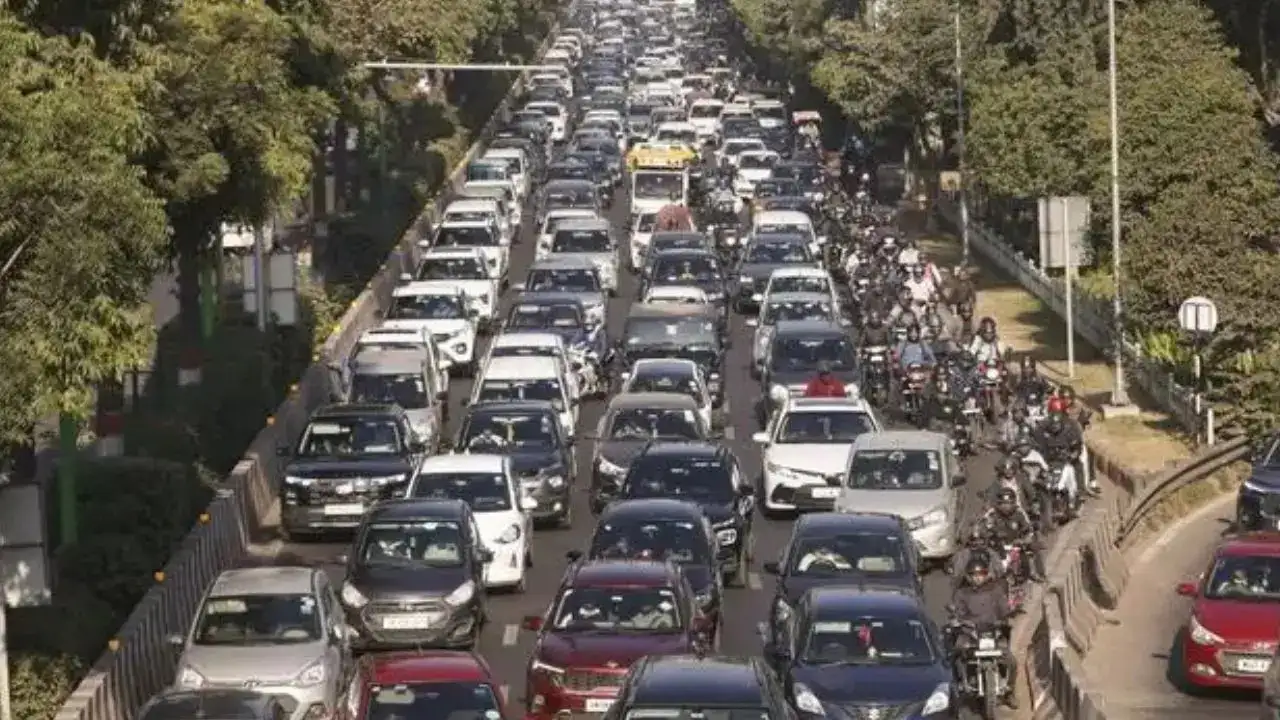By Ishita Roy Namya Sinha
Standard Operating Procedures (SOPs) have been issued by the Delhi Government to enforce the ban on refuelling end-of-life vehicles. Petrol pumps across city have been given a mandate to maintain a log of all denied fuel transactions involving such vehicles. They are also required to submit a list of violating vehicles to the Commission for Air Quality Management (CAQM) and the Ministry of Petroleum and Natural Gas on a weekly basis for further action. This move forms part of the government’s ongoing efforts to tackle air pollution. The policy is being implemented using Automated Number Plate Recognition (ANPR) technology. According to a directive from the CAQM, from 1 July all end-of-life vehicles, meaning diesel vehicles older than 10 years and petrol vehicles older than 15 years, will be prohibited from refuelling in Delhi regardless of the state in which they are registered. But is this enough to combat Delhi’s air pollution? Times Now spoke to a panel of experts to get their views. While the policy is a clear step towards addressing pollution caused by vehicles, experts say it is not enough on its own to clean Delhi’s air. Tackling Air Pollution Requires a Comprehensive Approach Environmentalist activist and advocate Akash Vashishtha stresses that the government’s move is incremental and addresses only one aspect of the multifaceted pollution problem. “If we look at the broader issue of pollution, this move addresses just one element. And frankly, this one element alone won’t help much. We have to consider the full range of contributing factors.” He highlights that beyond old vehicles, other significant contributors remain unchecked. “Enforcement of the cracker ban has remained largely uncontrolled for years. Industrial pollution, open burning of landfills, emissions from power plants, road dust, and construction and demolition waste continue unabated. The handling of C&D waste, in particular, has seen little progress despite clear Supreme Court directions and multiple National Green Tribunal orders.” Vashishtha further emphasises the erosion of green cover in Delhi, a vital natural filter for air pollutants. “The Supreme Court recently entrusted the Forest Research Institute, the Delhi government and an expert committee to explore ways to increase the city’s green cover.” He warns against isolated actions. “Merely cracking down on one issue — such as fuel supply to old vehicles — will not be effective unless it is part of a much larger, proactive and coordinated effort. If there are ten contributing factors, you cannot pick just one and expect meaningful results.” The Need for Holistic Multi-Sectoral Strategies Dr Ravindra Khaiwal, Professor of Environmental Health at the Department of Community Medicine and School of Public Health, PGIMER, Chandigarh, echoes this view. “Air pollution in Delhi is a serious concern and requires a holistic, multi-sectoral strategy. The restriction on refuelling older petrol and diesel vehicles is one such strategy because older vehicles generally emit significantly higher pollutants than those compliant with newer emission norms. However, this alone is not enough.” He advocates for an action plan that includes all sources of pollution, including industrial emissions, traffic congestion, and waste burning. Dr Khaiwal also calls for support mechanisms for vehicle owners. “The government should explore ways to assist middle-class vehicle owners, such as offering incentives or capital assistance for cleaner alternatives by tapping into funds collected from environmental penalties.” Protecting Lower-Income Vehicle Owners Independent analyst Chetan Agarwal highlights that the policy, though well-intentioned, disproportionately affects those who rely on older vehicles because they cannot afford to buy newer ones. He points out that the ban does not necessarily target the highest polluters, but instead impacts people with limited financial means. Agarwal suggests a more targeted solution: “Instead of a blanket ban based on the age of the vehicle, a more effective and equitable approach would be to implement remote sensing technology that monitors real-time emissions as vehicles are in motion — a kind of camera trap for pollution, akin to a camera trap for speed. Kolkata has tried this method in the past.” He adds that pollution camera traps would enable authorities to identify and remove only the most polluting vehicles, regardless of their age. “Such targeted enforcement, especially for petrol vehicles, could bring about a quicker and more impactful reduction in vehicular emissions without unfairly penalising lower-income individuals.” Calls for Transparency and Intergovernmental Coordination Akash Vashishtha also raises concerns about transparency surrounding the new policy. “From media reports, it appears that one of the studies backing this latest policy move was funded by Tata, a major automobile manufacturer. That raises questions that deserve scrutiny.” He stresses the importance of compliance with judicial directives. “The Delhi government must act on all pending directions issued by the judiciary, especially Supreme Court orders based on expert committee findings like those from the TAQM. These are not arbitrary directions — they are the result of scientific inputs.” Finally, Vashishtha points out that pollution control cannot be tackled by Delhi in isolation. “There must be ongoing, regular dialogue with surrounding NCR states. Right now, intergovernmental interaction only seems to occur reactively — during court hearings or when there’s a crisis. That’s not enough.”
